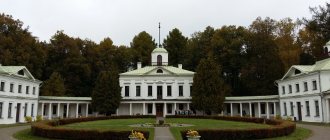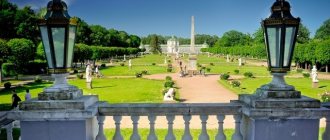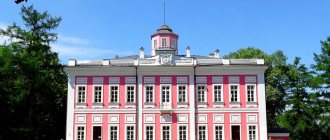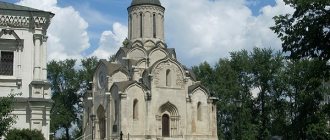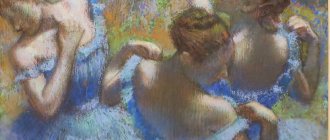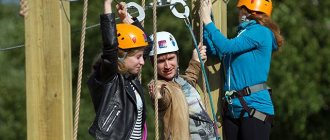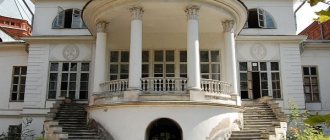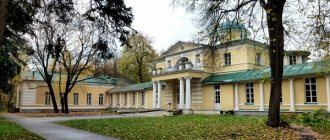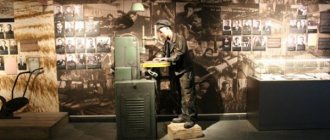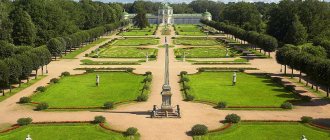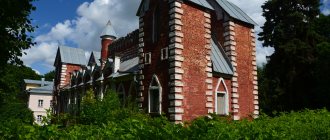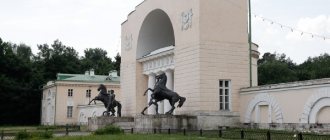A few facts about the Ostafyevo estate
- For more than 100 years, the Ostafyevo estate belonged to the old and rich Vyazemsky family - from 1792 to 1898.
- The Ostafyevo Estate Museum is also a memorable place for Russian aeronautics. In October 1803, Praskovya Gagarina, the first woman in Russia to fly in a hot air balloon, and French balloonist André Jacques Garnerin landed on her soil. The remains of the aircraft were stored in the estate for many years.
- The daughter of Praskovya Gagarina, Vera Fedorvna, married the owner of the estate, Peter Vyazemsky.
- The Ostafyevo estate is located near the city of Podolsk, previously it belonged to the Podolsk district, since July 1, 2012 it is the territory of Moscow.
- Near the estate there is the Ostafyevo business airport.
- The estate is a popular place among newlyweds; wedding walks and photo sessions are constantly held here.
What to see
In addition to the main house, the architectural ensemble of the estate included greenhouses, human quarters, a brick factory, wooden barns and sheds, greenhouses, greenhouses, 2 bridges, including a bridge-dam across the Lyubucha River, which are now largely lost.
On the second floor of the manor house there was a “Karamzin room”, in which from 1804 to 1816 Nikolai Mikhailovich Karamzin wrote 8 volumes of his “History of the Russian State”. In addition, the “figurative” and other “museum” rooms were located on the second floor.
Ostafyevo is an iconic place for the history of Russian aeronautics: Polina Yuryevna Gagarina (the first Russian woman to fly in a hot air balloon) and the world's first parachutist André Jacques Garnerin landed here.
The history of the creation of the Ostafyevo estate
The first mention of the village, where the Ostafyevo estate is now located, dates back to 1340. The village was owned alternately by the Lyapunovs, Apraksins, and Golitsyns. The history of the Ostafyevo estate began in 1751, when the merchant Kozma Matveev bought it and built here first a dyeing factory and then a cloth factory. Matveev planned to build a church in the village, which was built in 1781, but after his death, by the widow Anna Grigorievna. The temple was consecrated in the name of the Holy Trinity.
Trinity Church has survived to this day, having survived difficult Soviet times. In the 1930s, it was closed and ruined; it was used as a granary, warehouse, and sewing workshop. In 1991, the temple was given to the Russian Orthodox Church, and services were resumed.
Ostafyevo received its modern look under a new owner - in 1792, the estate was acquired by Prince Andrei Ivanovich Vyazemsky. The purchase was associated with the birth of the heir, son Peter. Here the prince built a two-story stone house in the classicist style with two side wings connected by a through colonnade. The architect of the house has not been identified, presumably it is Ivan Starov.
The building is crowned by a round, elegant belvedere, which was later lost and recreated only in 2012. The central part of the main facade is decorated with a six-column portico of the Corinthian order, which ends in a triangular pediment. On it you can see the coat of arms of the Vyazemsky family.
Grove kencons
Behind the house there was a formal French garden, which turns into an English landscape park. The Lyubucha River was blocked by a dam and formed a cascade of ponds: Upper, Middle and Lower.
History of the creation of the park and museum
Construction of the estate began in the mid-18th century by industrialist Matveev; at the end of this century, Prince Vyazemsky acquired the land, this was timed to coincide with the birth of his son Peter. It was under Prince Vyazemsky that the estate house and church were built, and he also created the famous Ostafyevo park. they say that the prince himself, that is, the owner, designed the estate.
Over these centuries, many legends and traditions have appeared about the Ostafyevo estate, which tell about the history of its creation. One of the funniest and most popular says that Pyotr Vyazemsky named the estate the first word that Alexander Sergeevich Pushkin uttered when he came to visit him.
They say that the poet told Vyazemsky’s lackey, when asked about his luggage, leave it, brother. As if this is where the name of the estate came from. In fact, here was the village of the same name, which was bought together with serfs by Vyazemsky’s father at the end of the 18th century, and Pushkin was not yet born at that time.
At the beginning of the 19th century, a house-estate was built in Ostafyevo, and at the same time the famous Russian historian, writer and author of the very famous work History of the Russian State, Nikolai Karamzin, lived here. He began to live in the estate because he was Andrei Vyazemsky’s son-in-law.
It was in Ostafyevo that Karamzin wrote 8 volumes of his work, and a note was also compiled on ancient and new Russia in its political and civil relations. After the Vyazemskys, Count Sheremetyev began to own the estate, and in honor of the centenary of the writing of this note, he opened a monument to Karamzin. And at the end of the nineteenth century, a museum dedicated to Karamzin was opened, where there were memorial things of the historian that were left by him after his departure from Ostafyevo.
Also in the nineteenth century, 2 oak trees were planted in the estate in honor of Karamzin, and the birch grove where he walked was named after him. After Pyotr Vyazemsky became the owner of the estate, Ostafyevo became the center of cultural and scientific life in Russia. Enlightened people of Russia of that time very often came to visit the poet, these were Turgenev, Pushkino, Griboyedov, Mitskevich, Gogol and others.
Pushkin quite often came to visit the poet in Ostafyevo, and the estate is one of the most famous Pushkin places, like Zakharovo. They say that Alexander Pushkin loved to walk along the linden alley, it was the one that led from the house into the depths of the park, and later he gave it the name Russian Parnassus, this name was later attached to the entire estate. In general, the linden alley was popular with both guests and owners of the estate, because it is a very beautiful and pleasant place.
It is officially recorded that Pushkin came to Ostafyevo 3 times, his longest visit was in 1830 from June 1 to 5. Vyazemsky himself was not at home at that time, since he had gone to St. Petersburg, and Pushkin was received by the prince’s wife Vera Fedorovna, it was with her that Pushkin discussed his future wedding with Natalya Goncharova. Pushkin visited Ostafyevo again at the end of 1830, came for 2 days, and on his third visit in January 1831 he spent only one day there. As you can see, Pushkin was in Ostafyevo for a total of 8 days, but they became very firmly entrenched in the history of Russia, and the Ostafyevo estate is closely connected with the name of the Great poet.
After Pushkin died in a duel, the Vyazemskys gave some of his belongings to the memorial room in Karamzin’s office. And in 1913, the Sheremetyev princes erected a monument to Pushkin, and at that time they also erected monuments to the poet Vyazemsky and Zhukovsky.
The third owner of the estate was Pavel Petrovich Vyazemsky, it was he who organized the memorial rooms of Karamzin, Pushkin and Pyotr Vyazemsky, his father, in Ostafyevo. The new owner of the estate was a collector, and quite a lot of painting and applied art appeared on the estate. Next, the owner of the estate was his son Pyotr Pavlovich Vyazemsky, he could not keep the estate, and therefore it was sold to Count Sheremetyev, who was his sister’s husband. It was he who opened the Pushkin Museum in Ostafyevo at the end of the 19th century.
After the 1917 revolution, the Ostafyevo museum-estate was preserved and declared a cultural monument. In the future, the museum’s rich collection will be partially transferred to other museums or sold at auction. During the Great Patriotic War, there was a military airfield near Ostafyevo, and a hospital was located in the estate itself. Already in the 21st century, when the estate was being restored, fragments of anti-aircraft devices from the war were found on its territory; these places were fenced off with ribbon.
Also in the mid-20th century, a holiday home for the Council of Ministers of the Soviet Union was opened in Ostafyevo, and the estate was redesigned; there were a lot of changes to open the sanatorium. And only in 1988 the Ostafyevo estate was again declared a museum.
Karamzin
Monument to Zhukovsky, 1913
Poets Vasily Zhukovsky, Ivan Dmitriev and Vasily Pushkin (uncle of Alexander Sergeevich Pushkin) came to Ostafyevo to Andrei Vyazemsky. From 1804 to 1816, the historian and writer Nikolai Mikhailovich Karamzin, friend and son-in-law of Prince Andrei Vyazemsky, lived on the estate. Having married his eldest illegitimate daughter, Catherine, the young family began to spend every summer and once the entire winter here.
Karamzin's office
It was here in Ostafyevo that Karamzin wrote his first eight volumes of “History of the Russian State.” An office was allocated especially for work on the second floor of the manor house, which was later named Karamzinsky. Having received the position of historiographer of the Russian Empire from Emperor Alexander I, an annual pension of two thousand rubles and access to the archives, Karamzin enthusiastically set to work. Friends called him the Ostafievsky recluse, because he preferred his office to balls.
In 1911, a monument to the historian was erected under the window of his study, on which there is a bas-relief of the historian. On the pedestal lie bronze volumes of the “History of the Russian State” and a scroll, symbolizing that Karamzin was guided by ancient Russian chronicles in his “History”. To this day, “Karamzin oaks” grow in front of the manor house, which were planted in the 19th century.
Monument to N.M. Karamzin
“Ostafyevo is memorable for my heart; we enjoyed all the pleasantness of life there... there flowed the average, perhaps the best, summers of my century, dedicated to family, work and feelings of general goodwill..."
N.M. Karamzin
“The History of the Russian State” was written by Karamzin in 12 volumes; he did not have time to complete the last volume; it was completed from drafts by writers K.S. Serbinovich and D.N. Bludov. The first edition included 8 volumes, which were published in a single edition in 1818. The history of the country from ancient times to 1612, written for the first time in accessible language, had a deafening effect not only in Russia, but also in Europe. “History” was translated into foreign languages and published abroad.
Karamzin did a titanic job as a historian, studying ancient Russian sources; it was he who discovered the Ipatiev Chronicle. In his notes, he cited sources, recorded quotations, paraphrased documents - and created, in essence, another book of great value. The notes are twice as long as the text of the History. Some historical documents have been lost, but thanks to their description in Karamzin's Notes, their contents are known.
N.M. Karamzin was the first to give a moral assessment of historical events and the actions of statesmen. For the first time in history, the role of the tyrant Tsar Ivan the Terrible was shown; before Karamzin, no one criticized the autocrat. Issue 9 of the volume, which describes the atrocities of Ivan the Terrible, aroused a flurry of interest among the public.
Pushkin highly appreciated Karamzin’s work, he dedicated the poem “Boris Godunov” to him. This is how he describes the reaction of Russian society after the publication of the first 8 volumes of History:
“Everyone, even secular women, rushed to read the history of their fatherland, hitherto unknown to them. She was a new discovery for them. Ancient Russia seemed to be found by Karamzin, like America by Colomb. They didn't talk about anything else for a while.
In our country, no one is able to explore Karamzin’s enormous creation - but no one said thank you to the man who retired to his scientific office during the most flattering successes and devoted 12 whole years of his life to silent and tireless labors.”
Pushkin A.S.
Karamzin in Ostafyevo
In 1800-1807, a manor house was built in Ostafyevo, and in 1804, one of the most famous Russian historians, journalist, writer, author of the famous 12-volume work “History of the Russian State”, Nikolai Mikhailovich Karamzin, settled here. He settled here for a reason - the fact is that he was Andrei Ivanovich Vyazemsky’s son-in-law. In Ostafyevo, 8 volumes of the famous tome were written, as well as a note “On ancient and new Russia in its political and civil relations.” In honor of the 100th anniversary of the writing of this famous note, Count Sheremetyev (owner of the estate after the Vyazemskys) unveiled a monument to Karamzin. And at the end of the 19th century, a museum was opened in the “Karamzin Room” with memorial things of the historian that remained after his departure from Ostafyevo.
In the 19th century, in memory of Karamzin, two oak trees were planted in the estate park; in addition, a birch grove in which he loved to walk was named in his honor.
In 1807, Pyotr Andreevich Vyazemsky became the owner of the estate; it was at this time that Ostafyevo became one of the centers of cultural and scientific life. The most enlightened people of that time regularly visit the famous poet and literary critic: A.I. Turgenev, A.S. Pushkin, A.S. Griboyedov, D.V. Davydov, A. Mitskevich, N.V. Gogol and many others.
Peter Vyazemsky
Monument to Peter Vyazemsky
In 1807, Prince Andrei Vyazemsky dies and Karamzin becomes the guardian of his son Peter, a future poet and literary critic, a participant in the Patriotic War of 1812 and the Battle of Borodino.
Gazebo "Temple of Apollo"
In 1816, the Karamzin family moved to St. Petersburg forever. Peter Vyazemsky becomes the sole owner of the estate. Under it, the Temple of Apollo gazebo on the shore of the pond and the Humpbacked Bridge are being built, and in honor of the 10th anniversary of the Patriotic War of 1812, Mars Glade is an oval glade.
Humpbacked Bridge
The estate becomes the center of cultural life of the Russian Empire. During this period, A. I. Turgenev, V. L. Pushkin, V. A. Zhukovsky, I. I. Dmitriev, K. N. Batyushkov, V. K. Kuchelbecker, A. S. Griboedov, D. V. came here Davydov, E. A. Boratynsky, A. Mitskevich, M. P. Pogodin and others, meetings of the Arzamas poetic community are held.
Monument to Pushkin
Alexander Sergeevich Pushkin, with whom Pyotr Vyazemsky had been friends since his youth, came to Ostafyevo three times, and N.V. visited here in 1849. Gogol. Pushkin often quoted Vyazemsky’s poems in his works, the epigraphs to Chapter I of “Eugene Onegin” and to “The Station Warden” were taken from the works of Vyazemsky, and in Chapter VII of “Eugene Onegin” he introduces him as a character. Pushkin dedicates poems to Vyazemsky and often rewrites them.
After the death of Pushkin A.S. his widow Natalya Nikolaevna gave Vyazemsky her husband’s things, in memory of him: a vest, a reed cane, a work desk, a writing instrument, a portrait of Zhukovsky, which he gave to Pushkin. These things were subsequently transported to Ostafyevo by Vyazemsky’s son, Pavel Petrovich, and placed them in Karamzin’s office.
LiveInternetLiveInternet
The Ostafyevo estate gained its fame in 1792, when Prince A.I. Vyazemsky acquired it, as well as the local village with 152 serfs from Lieutenant Zhuravlev. A significant argument in purchasing the estate was the presence of a luxurious linden alley. The purchase of the estate was timed to coincide with the birthday of Peter’s son, the future poet, historian, statesman and one of the founders of the Russian Historical Society.
Initially, Ostafiev’s architectural ensemble included the main house building, a brick factory, greenhouses, outbuildings, greenhouses, two bridges, one of which was a dam bridge.
Under the new owner, the main house of the estate was built between 1800 and 1807 in the Russian classicist style. The architect of such a pompous building is still not known for sure, but it is assumed that he could be Ivan Yegorovich Starov, a student of the then famous professor of the Russian Academy of Arts, Jean Vallin-Delamot.
Pyotr Andreevich Vyazemsky, a literary critic and poet-novelist, historian, biographer and memoirist, dedicated the poems “Parental Home”, “Village”, “Rural Church”, etc. to Ostafiev.
Peter Vyazemsky
Among the glorious visitors and guests of the Ostafyevo estate are N. Karamzin, who worked here on the “History of the Russian State”; A. Pushkin - friend and ally; representatives of the literary and poetic school of the Russian “Golden Age”: V. Zhukovsky, K. Batyushkov, A. Griboyedov, I. Turgenev, A. Mitskevich, N. Gogol, Denis Davydov - the entire “Russian parnassus”.
Nikolay Karamzin
Pavel Petrovich Vyazemsky
Pavel Vyazemsky became the owner of the Ostafyevo estate in 1865. His transformative activities included the preservation of the memorial rooms of his father, N. Karamzin and A. Pushkin, the arrangement of the Gothic Hall and a collection of paintings by German painters, some of which are now in the Moscow Pushkin Museum. Ostafyevo was in the family ownership of the Vyazemskys until 1898. At this time, the alley of linden trees “Russian Parnassus” was being developed, and a galaxy of “literary” monuments was being installed.
In 1898, the estate was bought by Count S.D. Sheremetev, the husband of Ekaterina Pavlovna Sheremeteva (granddaughter of P.A. Vyazemsky). The standard of Russian estate culture, Ostafyevo, became the Literary and Historical Museum in the late 80s of the 20th century. In 2021, the estate became a laureate of the Moscow Restoration competition.
Lobby
The lobby, or front hallway, of the Ostafyevo estate is the first room into which visitors enter from the entrance staircase of the mansion. The entrance hall is decorated in light colors; the curved wall farthest from the entrance is decorated with four columns made seamlessly with the wall. Between the columns there are three doors leading to several rooms. Through the right one you enter the corridor leading to the offices and libraries of the owners of the estate. The central door leads into the central Oval Hall, which has multiple doors opening onto the grounds. The left door leads to the formal dining room. Another door from the lobby, not included in the frame, is located in the left wall not far from the main entrance. It leads to the Great Drawing Room, the main reception area of the estate. The living room is equipped with two fireplaces, lined with white tiles during the reconstruction.
Large living room
From the Great Living Room the enfilade continues with a door to the hostess's front bedroom. Premises of this kind in Russian noble estates were not used for their intended purpose; they did not even always have beds, and if they did, they were used for decoration. Bedchambers were used for meetings with relatives and closest friends, the most confidential conversations.
The fireplace in the women's front bedroom is particularly elegant; at the bottom there is a grate with sculptures of angels. On the mantelpiece there are bronze candlesticks and a clock mounted in a sculptural group on a box. On the wall is an imitation of a stained glass window in a gilded frame. A curved fence separates the sleeping area, which is purely conventional here.
Master bedroom
The bedchamber mostly consists of a relaxation and communication area, and is decorated accordingly. The interior features several decorative columns on unusually high pedestals. The white and blue tones of the walls and other elements of the room are set off by a cream-colored frieze with stucco molding. Among the pieces of furniture, attention is drawn to an elegant table with an openwork supporting structure and an original vase on its tabletop. Picturesque miniatures on the left wall and a full-length portrait of a young violinist represent works by unknown artists.
The small or men's living room illustrates some of the peculiarities of the pastime of representatives of the strong half of the Russian nobility who gather in the Ostafyevo estate. Not only reading inspired poetry, listening to the latest chapters of Karamzin’s historical work was a leisure activity for representatives of the then intellectual elite of society. Card games, which gained popularity in all classes, were not alien to men in their prime. To clearly emphasize this, in the men's living room there is a card table for gamblers. On the walls of the room there are paintings with views of naval battles.
"Men's" small living room
Returning back to the front hallway, through the right of its three doors, visitors enter the corridor leading to the eastern part of the main building of the Ostafyevo estate. There are recreated personal premises of the estate founder Andrei Ivanovich Vyazemsky - an office and a library.
The office is decorated in muted colors on the walls; the furniture for now is the original secretary with a folding tabletop, several drawers for documents and a glazed bookcase with a bust on top. Near the other wall there is a massive table suitable for various purposes. Above it are several paintings depicting scenes from the life of the ancient Greeks and Romans.
Owner's office
On the other side of the corridor is the library of the elder Vyazemsky, or rather, this was the purpose of the room in ancient times, but now the museum only plans to purchase books identical to the lost ones and exhibit them in this room. The windows of the corner room, facing east and south, are equipped with dark blue curtains with golden fringe on the top element. The furniture consists of the same secretary - a closet, as in the office, and a small bureau. The grandfather clock is noticeable, the case of which is decorated with bronze inserts. Two engravings with a dark background, again from the life of the ancient Greeks, are placed near the doorway. It is absolutely impossible to recreate the prince’s extensive library in the same volume and quality after so many years and events.
Library
The central room of the mansion is located in the apse on the south side, this is the Oval Hall, which can be entered through the middle door of the hallway. The oval-shaped room consists of two tiers, the second is a high dome with window openings. The lower tier has seven large doorways with two leaves each, between them there are decorative half-columns made of artificial marble.
Oval Hall
There is practically no furniture in the Oval Hall, only a concert grand piano, a pianist's stool and several types of seats for rooms of this kind with information signs about the origin and previous use. From the hall there is a view of the linden alley - Russian Parnassus, according to the legendary expression of Pushkin.
The oval hall of the Ostafyevo estate is one of the best examples of an architectural solution for placing premises for special events, often organized on noble estates. The form of the altar apse, characteristic of Orthodox church architecture, was deliberately used, naturally with a different orientation to the cardinal points and with much greater access to natural light.
Directly from the front hallway or through the left door of the Oval Hall you can enter another room of the mansion - the Great Dining Room. The everyday purpose of this hall is extremely clear, and the design, made according to the ideas of Andrei Ivanovich Vyazemsky, is quite original. The prince tried to make one of the most visited rooms of any home not only a place for eating food, but also built a real museum here. Exhibition areas are organized in the room using columns and arches
Large dining room
The interior of the dining room is in the same vein and is in the process of restoration. Paintings and furniture samples, ancient weapons and sculptures are displayed here. The painting under the ceiling in the Roman style enhances the impression of a museum purpose of the room.
Living in the Ostafyevo estate for more than ten years, writing almost 8 out of 12 monograph volumes here allow us to consider the Vyazemsky mansion one of the places of residence and work of the great historian. Therefore, the second floor of the building occupied by the Karamzins is almost entirely dedicated to perpetuating his memory.
Memorial room of N.M. Karamzin
In one of the rooms on the second floor there is a memorial room telling about the main moments of the life of Nikolai Mikhailovich Karamzin. Here is a copy of the famous portrait of Karamzin by the artist Demon-Ortolani, below are portraits of members of the Arzamas literary group. On the other wall is a portrait of Karamzin by Tropinin, next to it is an image of his wife Ekaterina Andreevna. Below are landscape works with urban and rural views. The furnishings of the room do not pretend to be memorial; they only illustrate the styles of the masters of that time.
Ceremonial bust of Karamzin
In the room in question there are hung a number of paintings and portraits depicting the Karamzins and their acquaintances or relatives, and their places of residence.
Workplaces of N.M. Karamzin
The interior has been reconstructed based on the memories and testimonies of his contemporaries, and there are no discrepancies in the descriptions. All unanimously testify to the modesty of the environment, bordering on asceticism. Desks for writing and placing source documents, a cabinet with a file cabinet of primary sources of information about historical events - everything that is located in the room now and was at the time of the creation of the still unsurpassed “History of the Russian State”.
The museum complex of the Ostafyevo estate preserves the memory of all visitors and guests of the estate, many of whom mentioned it in their works, and some of whom wrote their lines directly here. Small but carefully selected exhibitions are dedicated to many famous personalities of this era.
The last owner of the Ostafyevo estate, Count Sergei Dmitrievich Sheremetev, a prominent military and statesman, was seriously interested in history and was a member of the Imperial Historical Society. Before the First World War, he erected monuments to some of his distinguished guests on the estate.
Monument to Pushkin
like others, it was carried out by Academician Panov, the casting was carried out according to Opekushin’s plaster model. On the pedestal there is a bas-relief depicting Pushkin in the Oval Hall of the Ostafyevo estate. The inscription on granite is eloquent: He lived among us.
There are monuments to other remarkable people who were associated with the estate.
The most original is the monument to Karamzin.
The bas-relief of the great writer and historian is placed on the front side of the pedestal, and instead of the usual figure of the character there are volumes of his History of the Russian State, a scroll of writing paper and a pen in an inkwell.
A stele in honor of Zhukovsky and a column with a bust of Pavel Petrovich Vyazemsky complement the stylistic diversity of sculptural works made by the same author.
Bust of Pavel Petrovich Vyazemsky
Petr Andreevich Vyazemsky
immortalized in his native estate with a bust in the toga of a Roman orator, on a massive granite pedestal. The front part of the granite base is decorated with a lyre in a laurel wreath, and on other faces there are lines from the poet’s works. The inscription, as usual, is laconic: To Prince Vyazemsky.
The beautiful park of the Ostafyevo estate attracts the attention of visitors even after examining the exhibition that has recently become accessible inside the estate.
Many are drawn to the coolness of the pond, on the shore of which there is a classic garden gazebo with the poetic name Temple of Apollo - quite consonant with the second name of the estate and the Greek ancestor of Russian Parnassus. The so-called Humpbacked Bridge, especially popular among lovers and wedding processions, is thrown across the narrow pond in this place.
https://countryscanner.ru/usadba-ostafevo/4/
https://deadokey.livejournal.com/440022.html
The fate of the Ostafyevo estate
In 1865, Ostafyevo passed to the son of Peter Vyazemsky, Pavel. A historian and art collector, he created rich collections of antiquities, books, paintings, weapons in the estate, as well as memorial rooms for Pushkin, Karamzin and his father.
After his death, his son Pyotr Pavlovich sells the estate to his sister’s husband, historian Count Sergei Dmitrievich Sheremetev, owner of the famous Kuskovo estate. He is the last owner of the Ostafyevo estate.
Monument to Pavel Vyazemsky, 1914
Sheremetev put a lot of effort into preserving the historical significance of the estate. Talented writers and artists began to gather here again. In 1899, in honor of the centenary of the birth of A.S. Pushkin, he turns the manor house into a Pushkin museum publicly accessible to everyone and one of the first in Russia.
Oval Hall Ostafyevo, late 19th century
And in 1911 and 1913, Sheremetev solemnly opened memorial monuments to Karamzin, Pushkin, Zhukovsky and Pyotr Vyazemsky on the territory of the infield park, and in 1914 - to his son Pavel Petrovich.
In 1918, the estate was nationalized, and the Ostafyevo Estate Museum was opened there, the director of which was Count Pavel Sergeevich Sheremetev, the son of the last owner of the estate. A decade later, he was removed from his post for his noble origin and in 1929 he was evicted with his family from Ostafyevo. In 1930, the museum was also liquidated, which is why most of the art objects it contained were sold, stolen, or distributed among other museum repositories in the country.
In 1931, a holiday home for the People's Commissariat of Defense was opened on the estate. During the Great Patriotic War, a military hospital operated here.
In the 1950s, the appearance of the estate underwent major changes: the layout of the house was updated, stone fences were added, and the colonnades were glazed. However, many unique details of the estate were lost.
Only in 1988 Ostafiev was returned to museum status; it became a branch of the A. S. Pushkin Museum. In 1994, it became an independent state museum-estate “Ostafyevo” - “Russian Parnassus”.
Ostafyevo after the revolution
The post-revolutionary fate of Ostafyevo is completely clear. The museum-estate was nationalized in 1918. From that moment on, it became the property of the state. The new government took control of the property.
The Sheremetyevs did not abandon their brainchild and did not emigrate abroad. They considered it a matter of honor to stay and save Ostafyevo, Ostankino, Kuskovo. They obtained a safe conduct for the estate from the new authorities. For their own safety, they had a letter of recommendation signed by Lunacharsky. In 1918, S.D. Sheremetyev died, and his son Pavel was appointed the first director of the museum and curator of the estate. In 1928, he was fired without explanation and his entire family was evicted from the estate. The fate of the estate was sealed.
In the spring of 1930, the museum in Ostafyevo was abolished, and the most valuable exhibits were removed from it. Some of them, such as a collection of icons from the 15th to 17th centuries from Old Believer monasteries, which Vyazemsky received as a gift from the Synod, were burned right on the estate.
Ostafyevo Estate Museum
Website: ostafyevomuseum.ru Address: Moscow, Ryazanovskoye village, Ostafyevo village. The park is open daily from 08.00 to 23.00, admission is free until 10.00.
In 2002, the western wing and stock storage of the estate were reconstructed. Three years later, the second wing and terrace were restored, and by 2021, the historical interiors corresponding to the 19th century were recreated in the manor house.
In honor of the 250th anniversary of Nikolai Karamzin, an exhibition dedicated to the writer was opened at the estate museum. The historian's office was restored, but only one thing in it is authentic - a desk dating from the 19th century.
Now the Ostafyevo Estate Museum hosts cultural events, Pushkin days, theatrical performances and concerts, the summer festival “Music in Palaces and Estates”, educational excursions, interactive programs, as well as all kinds of quests. The museum has published several book editions of the Ostafievsky Collection.
Practical information
How to get there
By train from Kursky Station or by minibus No. 422 from the Dmitry Donskoy Boulevard metro station to Shcherbinka station, then by bus No. 1045 to the Ostafyevo Museum stop. By car along the Warsaw highway to the town of Shcherbinka, then follow the signs.
From Podolsk by bus No. 1045 to the Ostafyevo Museum stop, or by car along Lenin Avenue until turning onto Podolskaya Street following the sign “Ostafyevo Museum-Estate.”
Working hours
- The museum is open daily from 10:00 to 18:00, on Fridays until 17:00, closed: Monday, Tuesday
The last Friday of the month is sanitary day.
- The manor park is open from 08:00 to 22:00 from April to September and from 08:00 to 20:00 from October to March.
From 08:00 to 10:00 admission to the park is free. On the last Thursday of the month, you can visit both the park and the museum for free, except for the exhibition “Decor of the Ostafevsky House”.
